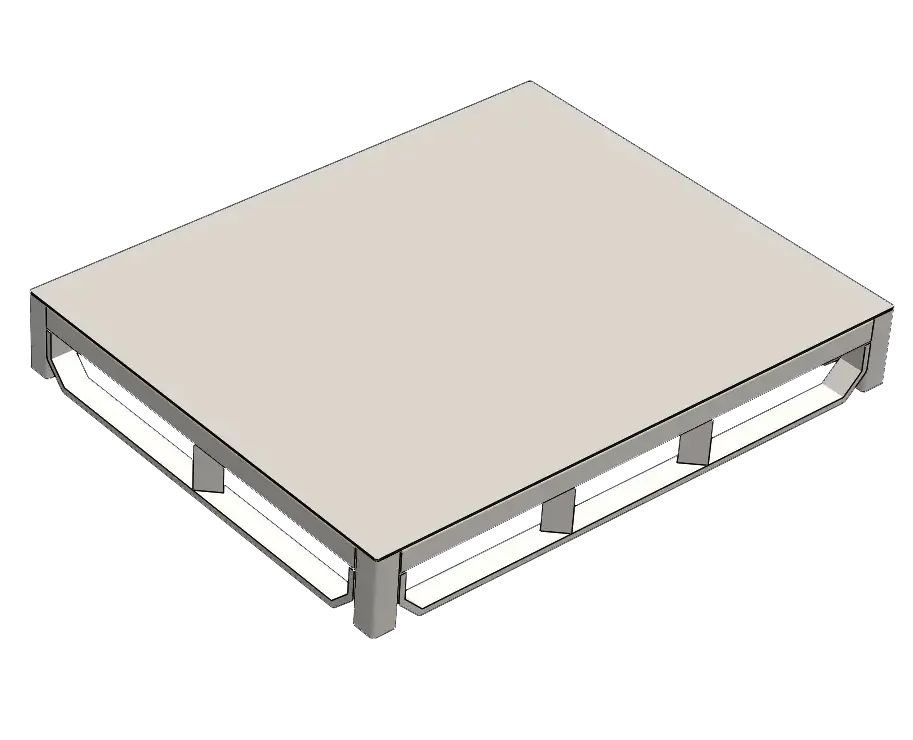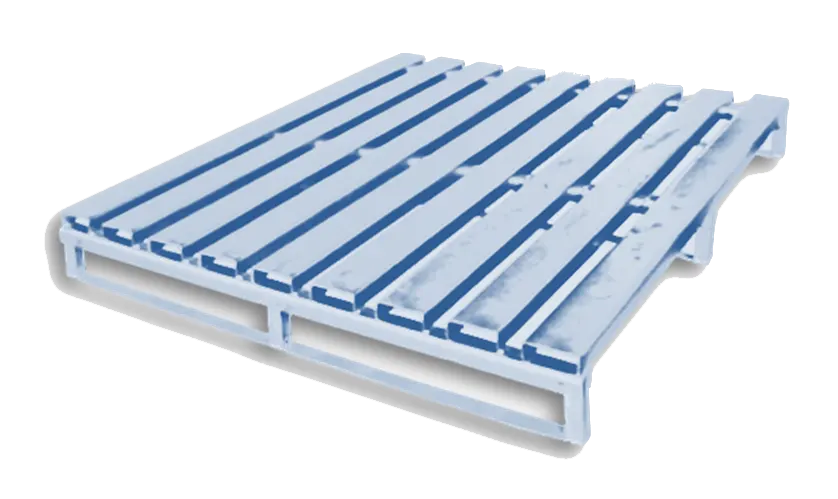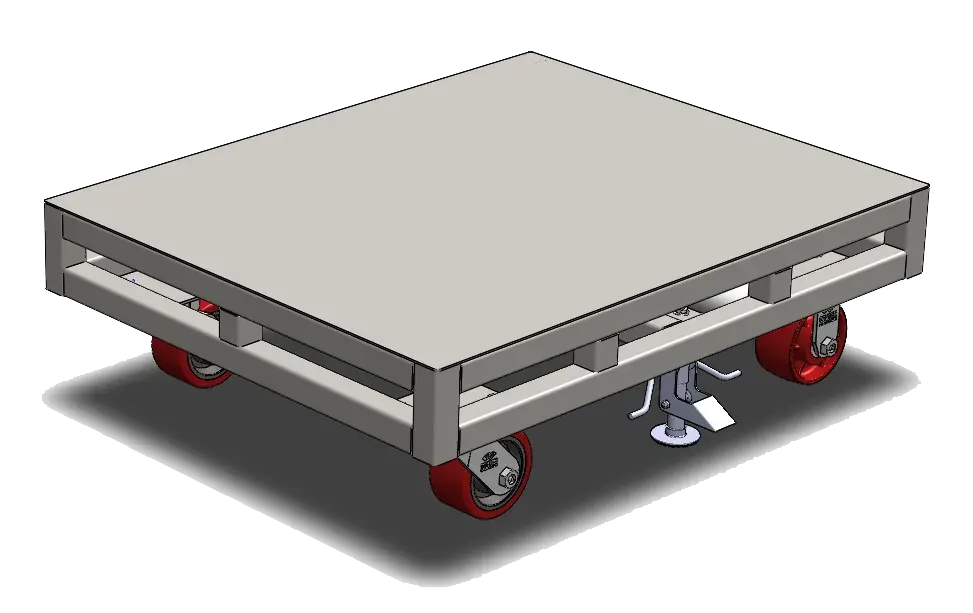Explore innovative designs, practical applications, and the numerous benefits of utilizing a wine barrel rack for your facility.
Read MoreHeavy Duty Pallets - Ultimate Guide to Durable Storage Solutions
What are heavy duty pallets?
Heavy duty pallets are sturdy and robust storage solutions designed to handle and transport heavy loads. These pallets are made from durable materials that can withstand the weight and stress of large and bulky items. They provide a secure and stable platform for storing and moving goods in various industries such as warehousing, manufacturing, and logistics.
Key Takeaways:
- -> Heavy duty pallets are designed to handle heavy loads and provide stability during transportation and storage.
- -> Common materials used in heavy duty pallets include wood, plastic, and metal.
- -> Load capacity and weight limits of these pallets depend on the material, design, and construction of the pallet.

Why are heavy duty pallets important?
Heavy duty pallets play a crucial role in ensuring the safe and efficient storage and transportation of heavy loads. They provide several benefits, including:
-
Load Stability: These pallets are designed to maintain the stability and integrity of the load. This prevents accidents, damage to goods, and injuries to workers.
-
Improved Efficiency: Utilizing these products allows for easier handling and movement of heavy loads with the help of forklifts, pallet jacks, and other handling equipment. This enhances productivity and saves time.
-
Damage Prevention: These pallets help protect goods from being damaged or crushed during storage and transportation. Their sturdy construction minimizes the risk of breakage and ensures the integrity of the load.
-
Space Optimization: Heavy duty pallets are stackable, which maximizes the use of vertical space in warehouses and storage facilities. This allows for more efficient utilization of available space.
Types of heavy duty pallets
There are various types of heavy duty pallets available, each designed to meet specific industry requirements. Some common types of pallets include:
-
Wood Pallets: Traditional wooden pallets are widely used in heavy-duty applications due to their robustness and affordability. They are ideal for industries that require maximum load capacity.
-
Plastic Pallets: Plastic pallets offer durability, hygienic features, and resistance to moisture, chemicals, and pests. They are commonly used in industries like food and pharmaceuticals where cleanliness and product safety are crucial.
-
Metal Pallets: Metal pallets provide excellent strength, stability, and longevity. They are suitable for heavy loads and harsh environments. In fact, some metal pallets are also collapsible, allowing for easy storage.
-
Composite Pallets: Composite pallets are made from a combination of materials such as wood and plastic. They offer the benefits of both materials, such as the strength of wood and the durability of plastic.

Factors to consider when choosing heavy duty pallets
When selecting heavy duty pallets for your business, it is essential to consider several factors to ensure you choose the right pallets for your specific needs:
-
Determine your storage requirements: Assess the type and weight of the goods you will be storing to determine the appropriate pallet size and load capacity.
-
Consider the materials used: Different materials possess varying properties, such as strength, durability, and resistance to chemicals or moisture. Choose pallets that align with your industry requirements.
-
Evaluate load capacity and weight limits: Heavy duty pallets come with load capacity and weight limit specifications. Ensure that the pallets you choose can handle the weight of your products.
-
Assess durability and longevity: These durable pallets should be able to withstand constant use, impacts, and environmental conditions. Consider the expected lifespan of the pallets and their resistance to wear and tear.
-
Evaluate compatibility with handling equipment: Ensure that the pallets are compatible with your handling equipment, such as forklifts or pallet jacks. This ensures smooth and efficient movement of goods.
-
Consider sustainability and environmental impact: Look for pallets made from eco-friendly materials and consider their recyclability or reusability. Sustainable pallets can contribute to your company’s environmental goals.
-
Evaluate cost-effectiveness: Compare the initial cost of the pallets with their durability and expected lifespan. Consider the potential savings in reduced product damage, handling time, and maintenance costs.
Benefits of using heavy duty pallets
Using heavy duty pallets can provide numerous benefits for your business:
- – Improved safety: Heavy duty pallets enhance the safety of workers and prevent accidents caused by load instability or collapsing pallets.
- – Increased efficiency: These pallets allow for more efficient handling and movement of goods, reducing downtime and increasing productivity.
- – Damage prevention: Heavy duty pallets protect goods from being damaged during storage and transportation, minimizing losses and preserving product quality.
- – Space optimization: The stackable nature of heavy duty pallets allows for better utilization of storage space, maximizing capacity in warehouses and distribution centers.
- – Versatility: These pallets can be used in various industries and applications, making them a versatile and practical storage solution for different businesses.
How to choose the right heavy duty pallets for your needs
Choosing the right pallets involves a systematic approach. Follow these steps to ensure you select pallets that meet your unique requirements:
1. Determine your storage requirements
Assess your storage needs by considering factors such as the size, weight, and quantity of products you are handling. This will help determine the type and size of pallets required.
Tips for assessing your storage needs
- – Measure the dimensions and weight of your typical products.
- – Determine the maximum stacking height required.
- – Consider any specific storage requirements, such as temperature control or cleanliness.
2. Consider the materials used
Evaluate the pros and cons of different pallet materials, such as wood, plastic, or metal. Consider factors like durability, resistance to moisture or chemicals, and compliance with industry regulations.
Common materials used in heavy duty pallets
- Wood: Traditional, affordable, and widely available. Can be susceptible to moisture and damage over time.
- Plastic: Durable, hygienic, and resistant to moisture, pests, and chemicals. Ideal for industries with strict cleanliness requirements.
- Metal: Strong, durable, and suitable for heavy loads and harsh environments. May be more expensive than other materials.
3. Evaluate load capacity and weight limits
When choosing your pallet, please ensure that you choose one that can safely handle the weight of your products. Consider the maximum load capacity specified by the pallet manufacturer and ensure it aligns with your requirements.
Understanding load capacity and weight limits
- Dynamic Load Capacity: The maximum weight a pallet can support while being moved by handling equipment like forklifts or pallet jacks.
- Static Load Capacity: The maximum weight a pallet can support when stationary or stacked.
- Racking Load Capacity: The maximum weight a pallet can safely hold when placed in a rack or storage system.
4. Assess durability and longevity
Consider the expected lifespan of the pallets and their resistance to wear, impacts, and exposure to environmental conditions. A durable pallet will require less frequent replacement and lower maintenance costs.
5. Evaluate compatibility with handling equipment
Ensure that the chosen pallets are compatible with your handling equipment, such as forklifts or pallet jacks. This ensures smooth and efficient movement of goods.
6. Consider sustainability and environmental impact
If sustainability is a priority for your business, look for pallets made from eco-friendly materials such as recycled plastic or FSC-certified wood. Evaluate the pallets’ recyclability or reusability to reduce your ecological footprint.
7. Evaluate cost-effectiveness
Compare the upfront cost of the pallets with their expected lifespan and durability. Consider factors such as reduced product damage, handling time, and maintenance costs to determine the long-term cost-effectiveness.

How to maintain and care for heavy duty pallets
To ensure the longevity and functionality of heavy duty pallets, it is important to follow proper maintenance and care practices:
1. Regular inspection and maintenance
Regularly inspect your pallets for any signs of damage, such as cracks, splintering, or loose boards. Repair or replace damaged pallets promptly to prevent accidents or load instability.
Tips for inspecting heavy duty pallets
- – Check for any visible signs of damage, such as broken boards or missing nails.
- – Ensure that the pallets are free from warping, which can affect stability.
- – Inspect the pallets for signs of pest infestation, especially in wooden pallets.
2. Proper cleaning and sanitation
Clean the pallets regularly to remove dirt, dust, or any potential contaminants. This helps maintain a hygienic storage environment and prevents the spread of pathogens.
3. Handling and storage guidelines
Train employees on proper handling and storage techniques to minimize the risk of damage to pallets. Avoid dropping, dragging, or overloading the pallets, as this can cause structural damage.
4. Repairing and replacing damaged pallets
Repair damaged pallets using appropriate tools and materials. Replace any pallets that are beyond repair to ensure the safety and integrity of the load.
Best practices for using heavy duty pallets
Maximize the benefits of heavy duty pallets by following these best practices:
- – Use appropriate load securing methods, such as stretch wrap or strapping, to prevent items from shifting during transportation.
- – Distribute the load evenly to ensure stability and prevent overloading specific areas of the pallet.
- – Train employees in proper stacking and handling techniques to minimize the risk of accidents or damage.
- – Regularly monitor and evaluate pallet performance to identify any areas for improvement.
Summary
Heavy duty pallets provide a durable and reliable storage solution for businesses dealing with heavy loads. By understanding the different types of pallets, considering the factors that affect their selection, and following proper maintenance practices, you can choose the right heavy duty pallets that meet your storage requirements and enhance your operational efficiency.

Customize Your Own & Get a FREE Estimate!
Simply e-mail us at sales@plexformps.com with all your information
OR call us today & speak to one of our packaging professionals









